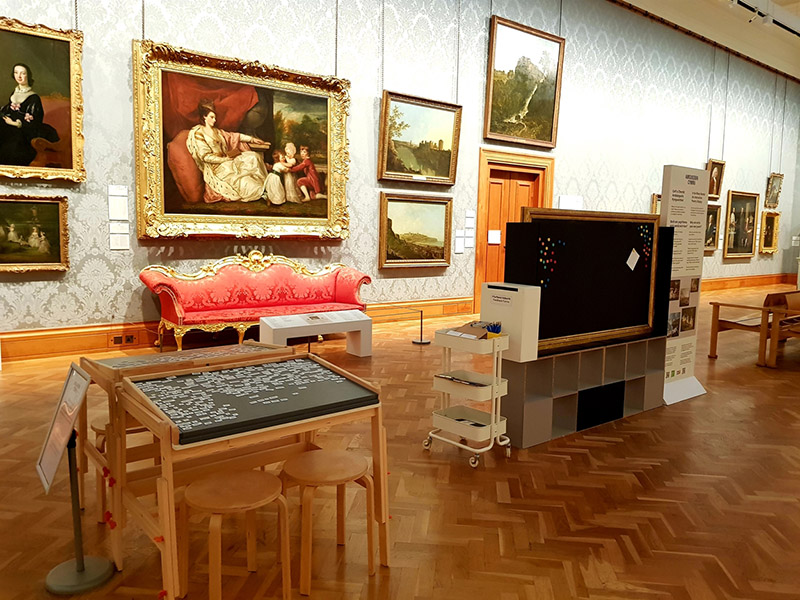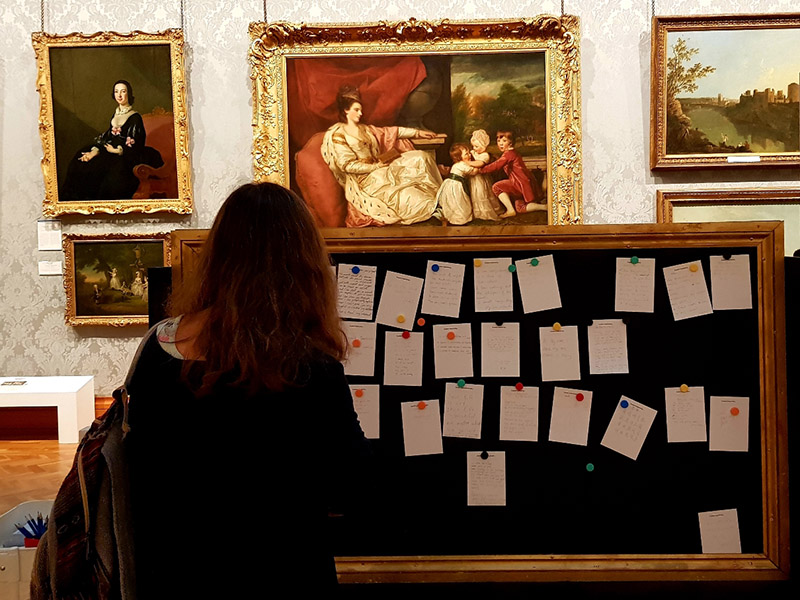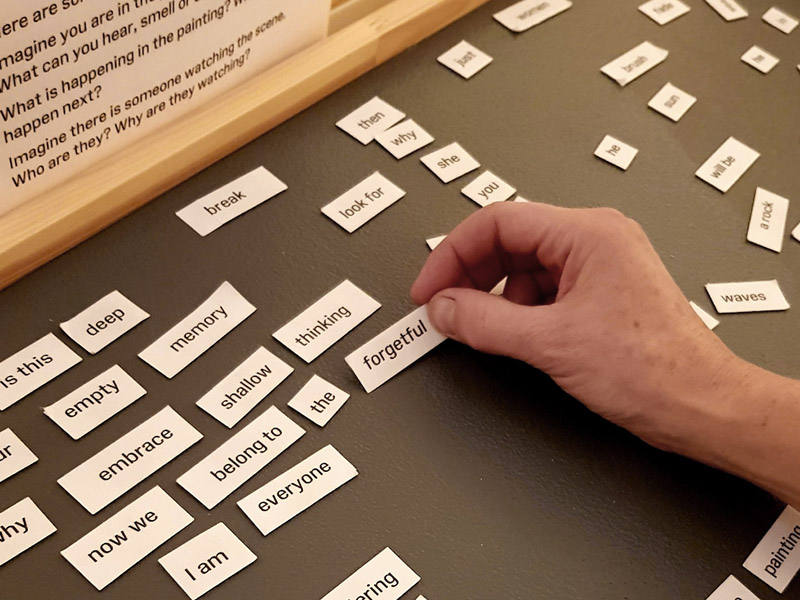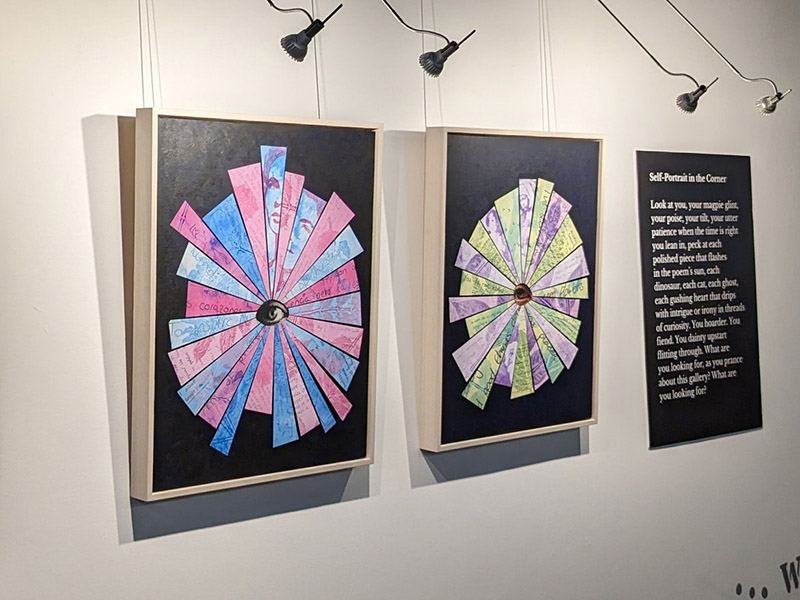
Final year PhD student Rachel Carney reflects on her most recent placement with Museum Wales, and the unexpected creative outcomes of her research.
My research investigates how poetry writing activities can be used in museum galleries to enrich visitors’ engagement with works of art. Last year I delivered a series of creative writing workshops at National Museum Cardiff, inviting people to write poems in response to works of art in their 18th Century historic art gallery. I then invited the workshop participants to submit their poems for an interactive display. The display presented multiple poems beside each work of art, and the poems were also recorded as audio clips accessed via a QR code in the gallery.

Visitors were able to add their texts to the display
The interactive display invited museum visitors to respond by having a go at writing their own poem. I commissioned the production of a framed magnetic board, sturdy enough to survive the visitor onslaught, where visitors could add their own creative texts, comments and drawings. I also created a more family-friendly option: magnetic word-sets that could be arranged or re-arranged to form short poems.

The magnetic words
The display opened in September 2022, and ran for nine weeks, during which time I collected feedback, chatted to staff and visitors, and took lots of photos. The public response was incredible, beyond anything I could have predicted. I was particularly impressed by the number of languages represented. Visitors wrote poems and other texts in Chinese, Japanese, Urdu, Arabic, Thai, Greek, Spanish, French, Korean, Dutch, German and Ukrainian, as well as Welsh and English.
The display seemed to capture the interest of lots of different visitors: school children, teenagers, family groups, students and older people. I spent several months analysing the visitor response, and this analysis will be published in my thesis.
But the most unexpected outcome was my own creative response to the display. My research is interdisciplinary. I use theoretical analysis, close reading, poetic inquiry and empirical research methods. My intention had always been to write a collection of poems as part of my thesis, responding to the outcomes of the interactive display and to the texts written by museum visitors.
I was not expecting to create visual art, but four years of analysing, researching and writing about art engagement has led me to take some of my creative work off the page and onto the wall, producing a series of poetry-objects that can be displayed as interactive visual art.

My poetry-objects
During the past few months SWWDTP funding has enabled me to experiment with a variety of different materials and techniques, including collage, gelliprinting and painting. I’ve also received training and advice from a local artist. Two of the poetry-objects that now form part of my thesis are currently on display in a public exhibition. And as I approach the end of this incredible creative journey, I intend to continue working with both poetry and visual art, exploring the connections between the two.
About Rachel
Rachel Carney is a poet and creative writing tutor based at Cardiff University and Aberystwyth University. She worked in museums for a number of years before beginning her PhD. She has an MA in Museum Studies from Newcastle University and an MA in Creative Writing from Manchester Metropolitan University. Her debut poetry collection ‘Octopus Mind’ was published by Seren Books in July 2023.
Additional links and publications
Rachel has written about her research in the Journal for Artistic Research, as part of a collaboration with other SWWDTP funded students (members of the Creativity in Research Cluster).
Some of the poems written in response to, and as part of this research were published in Rachel’s debut collection Octopus Mind.
See Rachel’s blog Created to Read for more details on her research, with links to published poems and articles.
Categorised in: Student Blogs